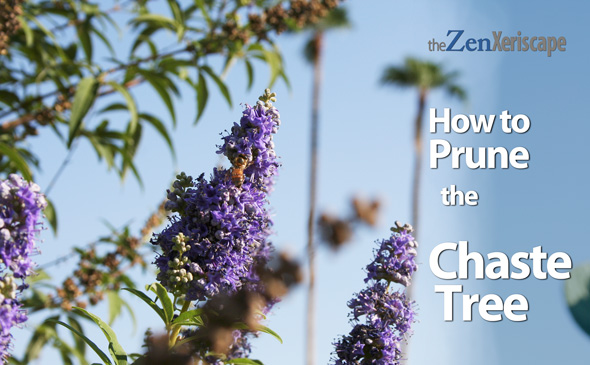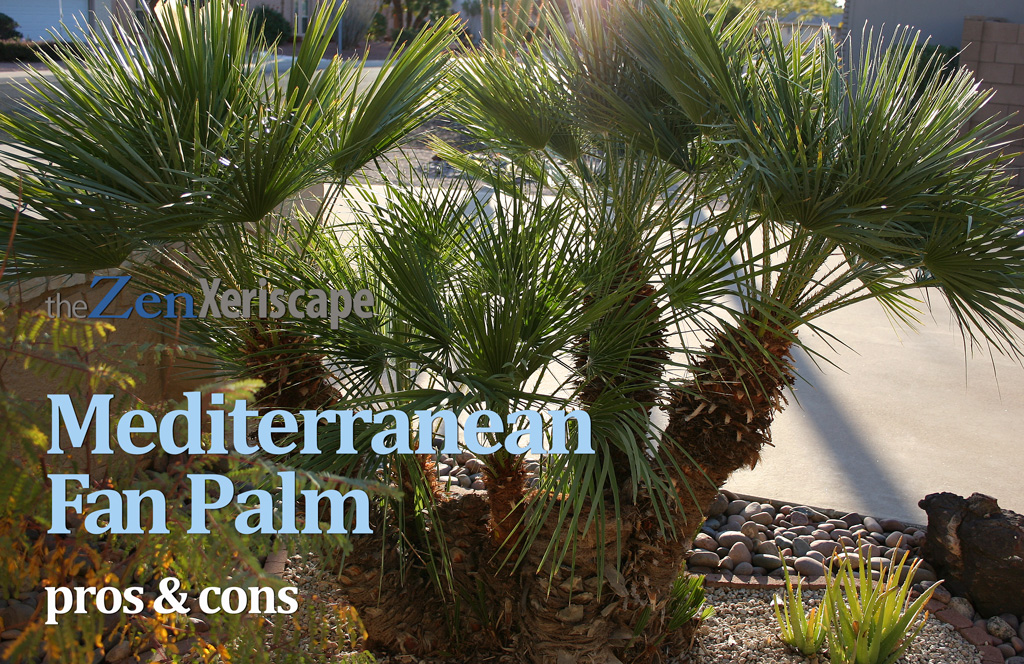
It’s very pretty, has lush green leaves, and thrives in the Arizona heat.
However, there are some annoying cons, which I’ll discuss!
Photo by Doug Martin
The Mediterranean fan palm (Chamaerops humilus), sometimes called the European fan palm, is probably one of the easiest and prettiest palm trees I have ever grown. However, it grows excruciatingly slow. Because of those conflicting attributes, I will discuss the Mediterranean fan palm pros and cons.
Mediterranean fan palm pros and cons
Because I am a frugal person, I have only ever bought the smallest and least expensive Mediterranean fan palms I could find. Then, I carefully placed them in my landscape at locations where I hoped they would make the most impact.
But before my small fan palms had a chance to grow large, I’d get the urge to sell my house—then I’d move on. Unfortunately, I would always leave my small, immature Mediterranean fan palms behind. That happened many times.
Today, though, I live in a house that was built in 1972. Back then, the builder strategically placed one small Mediterranean fan palm on each side of the entryway sidewalk
50+ year-old Mediterranean fan palm
Now after 50+ years, both of these palms have massive clumps with 5 or 6 offshoots that are about 4 to 6 feet tall. In the middle of the 2-to-3-foot wide clump was a main center trunk.
Each of those main palm tree trunks was over nine feet tall at the tip of the crown. To me, the high main trunks looked odd and out-of-place compared with the other more moderately sized offshoots.
To give my Mediterranean palm tree a more pleasing appearance, I used an electric chain saw to cut off both of the main trunks. The remaining offshoots now have various but similar heights. To me, they now look more natural.
Of course, I get more new offshoots all around the large, mature clump of trunks. Each year, I let the neighborhood rabbits chew off any edible palm greens. Then, I use my old pruning shears to clip off any immature trunks before they get too large.
Landscape clearance deals! (As an Amazon Associate, I earn a commission from qualifying purchases.)
Mediterranean fan palm pros and cons
PROS:
Great focal point or background plant
The Mediterranean fan palm can be grown as a single trunk tree, but you can also let it develop many trunks. The builders of my house cleverly used two Mediterranean fan palm trees to frame my entryway sidewalk.
Not only do my two palm trees direct the visitor’s eyes to the door, but the many trunks create a mysterious aura that invites the visitor closer.
The creative gardener might use a single trunk tree as a focal point in a moderately sized landscape. This tree doesn’t get as tall as most palm trees, so it won’t overwhelm a landscape.
Or, if you let your Mediterranean fan palm develop many offshoots, it will develop into a large bush that can serve as a backdrop for other plants and flowers.
Use the fan palm as a potted house plant
To add extra spice to your outdoor living areas, put your Mediterranean fan palm in a pot. This palm tree has a slow growth rate, and will be happy in one pot for many years. Plus, you might also take your potted fan palm inside the house during the colder winter months.
Tolerant of cold and heat
Your Mediterranean fan palm will survive outside in USDA hardiness zones of 8b to 11. While your fan palm will make it through low winter temperatures of 15-to-20 degrees Fahrenheit, mine have even survived single digit temperatures. This is a very cold-tolerant palm tree.
In addition, the Mediterranean fan palm tree loves the sun and all the heat it can generate. During last summer’s 120-degree-days in Phoenix, Arizona, my Mediterranean fan palm did not wilt or weep. In fact, the hot weather seemed to make it greener than ever.
Height and width won’t change much in 10 years
Because the Mediterranean fan palm doesn’t grow fast, it can be a stable feature in your xeriscape. While other drought-tolerant plants can quickly outgrow their allotted space in your landscape, this palm tree will stay the same for decades.
While to many people that would be a con, and might also be a pro! The Mediterranean fan palm tree can actually get up to 15 feet tall, but only after many years.
Doesn’t need much water
I give my two mature Mediterranean fan palms a deep watering every week during the summer. In between each deep irrigation, the soil always dries out completely. The whole area around my fan palms is packed with fibrous roots that soak up every last drop of water.
However, during the winter, if the days stay cool and less sunny, I could get by with watering it only once a month. I am sure they could survive on even less water than that during the winter.
Once established, your Mediterranean fan palm will be drought-tolerant, too.
Tolerant of too much water
While many xeriscape plants, like most cactus varieties and agaves, usually rot with too much water, the Mediterranean fan palm can tolerate excess water.
Of course, more water will stimulate faster growth. That is always a plus with the slow-growing Mediterranean fan palm. While I consider this tree to be drought-tolerant, it also tolerates excess water.
Flowers and fruit attract wildlife
In the spring, your Mediterranean fan palm will get small, yellow flowers, that will mostly be hidden and difficult to see. However, after the flowers are pollinated, it will develop a strand of attractive berries.
As they ripen, they will change color. The birds love to peck and eat these berries. The ones that don’t get eaten will gradually dry up and fall into the soil.
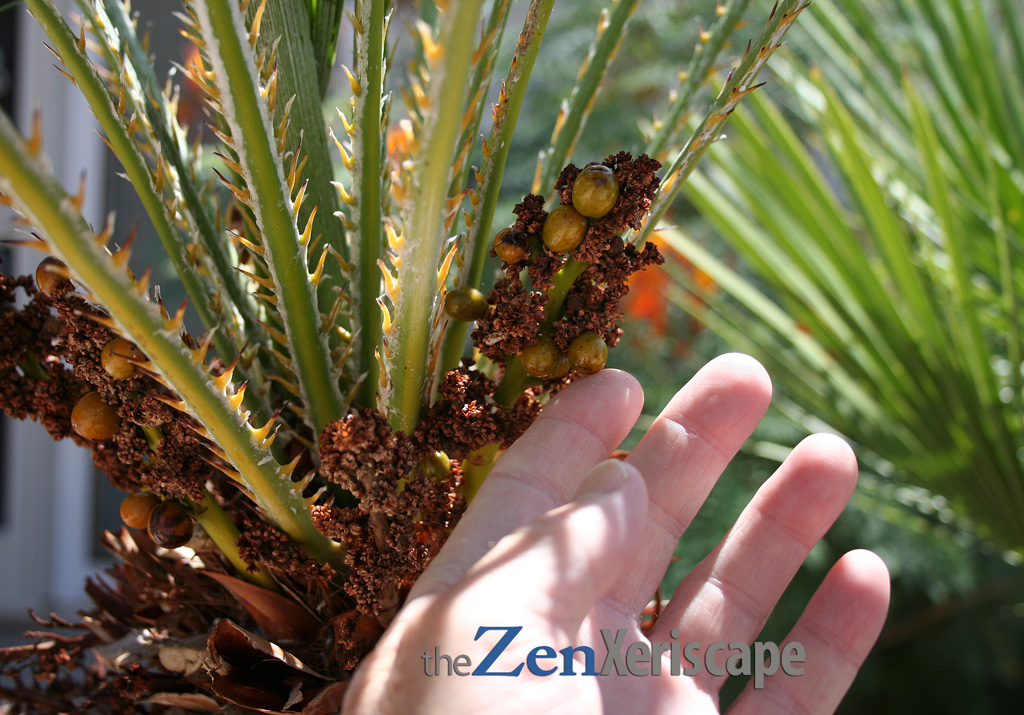
However, the wilted flower clusters contain
massive amounts of pollen that will float into the air.
Photo by Doug Martin
Buy an edible window herb garden! (As an Amazon Associate, I earn a commission from qualifying purchases.)
Palm fronds are very pretty
The fronds on this tree are very green and lush. The lushness adds an attractively tropical element to any xeriscape, especially when used as a focal point, or just as a background plant!
In my landscape, I have one of my Mediterranean fan palms next to a Mexican red bird of paradise, and together, they look fabulous!
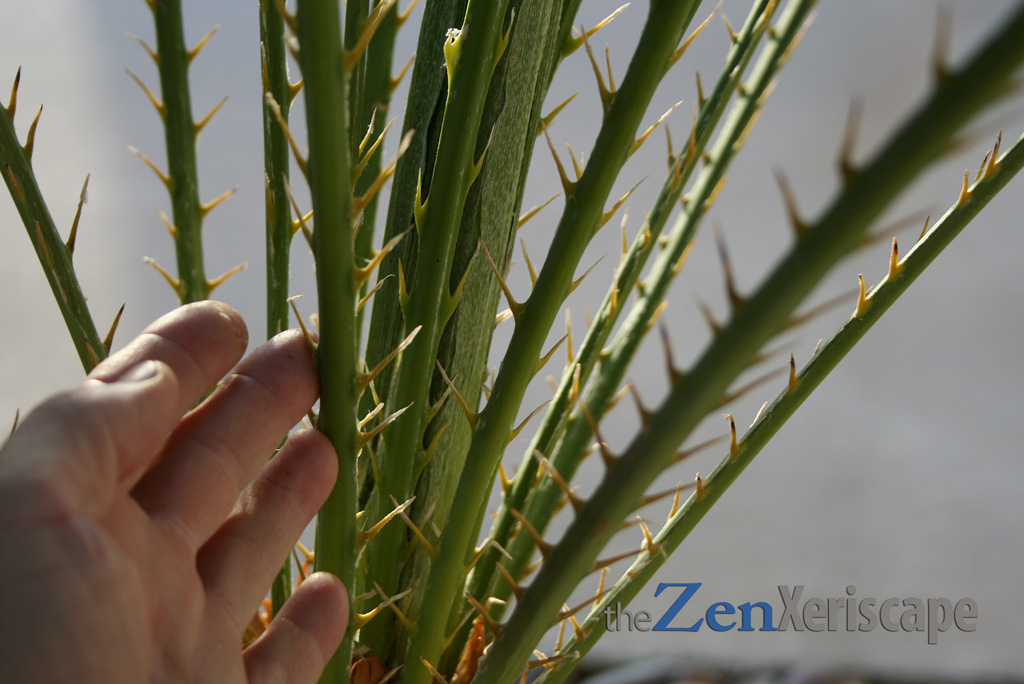
but the petioles that support them are very spiny.
I always wear gloves when I prune this palm tree!
Photo by Doug Martin
Mediterranean fan palm pros and cons
CONS:
Slow growth rate
The growth rate of the Mediterranean fan palm tree is agonizingly slow. However, I have noticed that the more mature this palm tree becomes, the faster it grows. In the last year, my 50+ year-old Mediterranean fan palm has added at least 6 inches of new growth in each of its trunks.
But if you start out with an inexpensive juvenile plant, prepare yourself for a long wait. It could take two decades or more before a small fan palm develops into a specimen plant in your landscape.
Along the way, though, you can enjoy its beautiful shape and colors as the leaves complement and accentuate other nearby landscape plants.
Pollen is dusty and aggravates allergies
After the small flowers wilt, the clusters that are filled with pollen just hang there. They are not only unsightly, but if I just brush against them, they release a massive cloud of pollen. It’s terrible.
The pollen really aggravates my allergies. It’s so bad that I absolutely must take a shower and wash my clothes immediately after I prune the palm fronds and old flower clusters from the tree.
So for me, the amount of pollen that this tree creates is definitely a con!
New pups cluster all around the base
Yes, new pups will cluster all around the base of the Mediterranean fan palm. Eventually, each one of them will slowly grow into a large trunk.
Of course, each pup will produce green fronds that look nice, but with twenty or thirty or more pups growing around the base, it quickly becomes too dense. Personally, I think all those pups make the tree look sloppy in the landscape.
So every spring and fall, I devote time to prune away each pup! And because of the sharp spines, I need to wear gloves. Also, because of the pollen, I need to wear a mask!
It’s aggravating, and definitely a con!
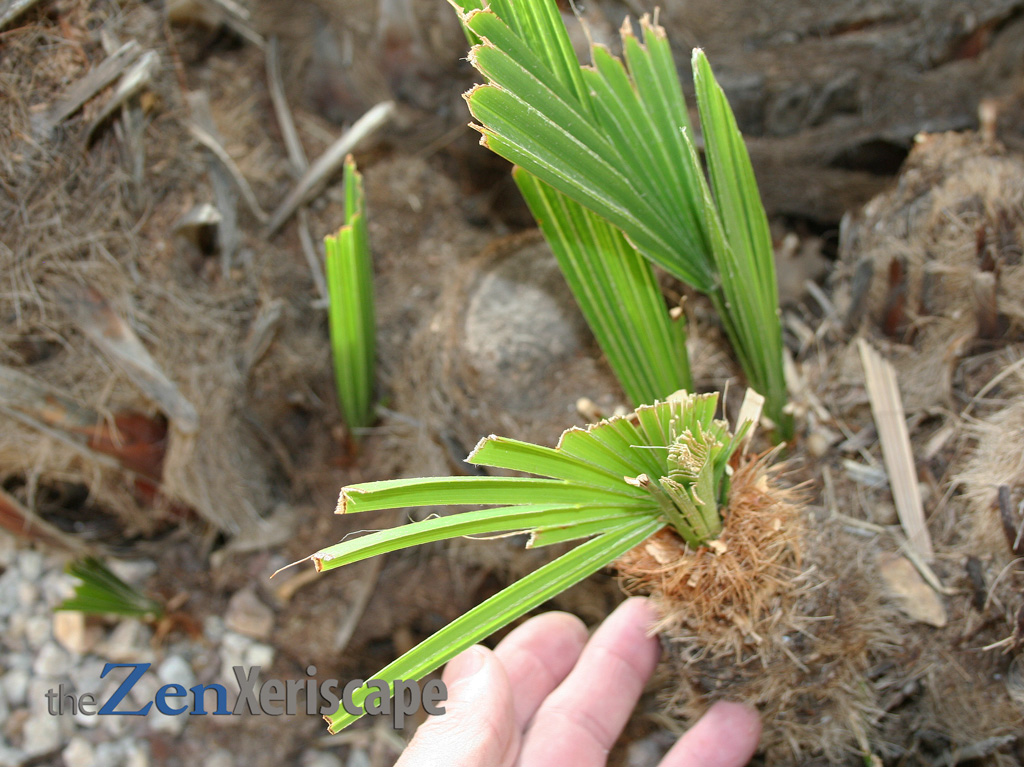
Rabbits eat the tops of the fronds, but to keep a neat appearance,
I prune off the new pups each spring and fall.
It’s can be a tedious task.
Photo by Doug Martin
Buy beautiful plant containers at Amazon! (As an Amazon Associate, I earn a commission from qualifying purchases.)
TAKEAWAYS
Mediterranean fan palm pros and cons:
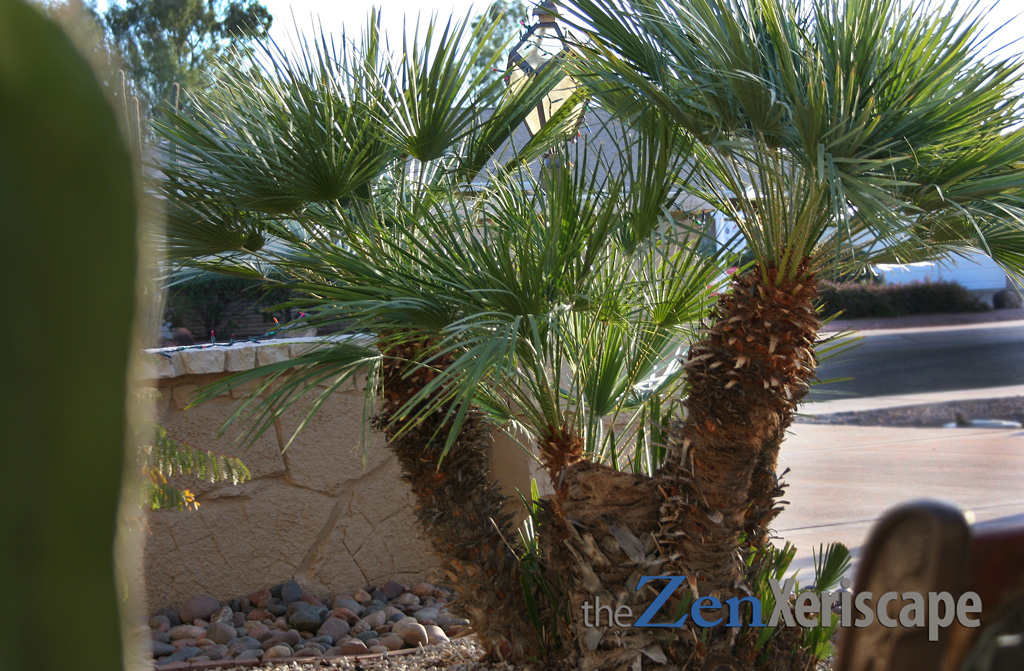
the Mediterranean fan palm is a beautiful addition
to any landscape. Once established, it is
drought-tolerant and heat-tolerant.
Photo by Doug Martin
I believe the Mediterranean fan palm tree is one of the most beautiful palm trees. In addition, it is cold-tolerant and extreme weather. This tree also loves summer heat—I’m talking Phoenix, Arizona, 120-degree-heat. Now, that is hot!
One of the detriments of this palm tree is its slow growth rate. You must be patient, and realize it will take decades to reach a mature height.
However, no matter where your Mediterranean fan palm is in its growth cycle, it will look beautiful and be a compelling addition to your landscape or your drought-tolerant xeriscape.
Browse the latest Amazon clearance deals! (As an Amazon Associate, I earn a commission from qualifying purchases.)
Content and photos by Doug Martin at the Zen Xeriscape



